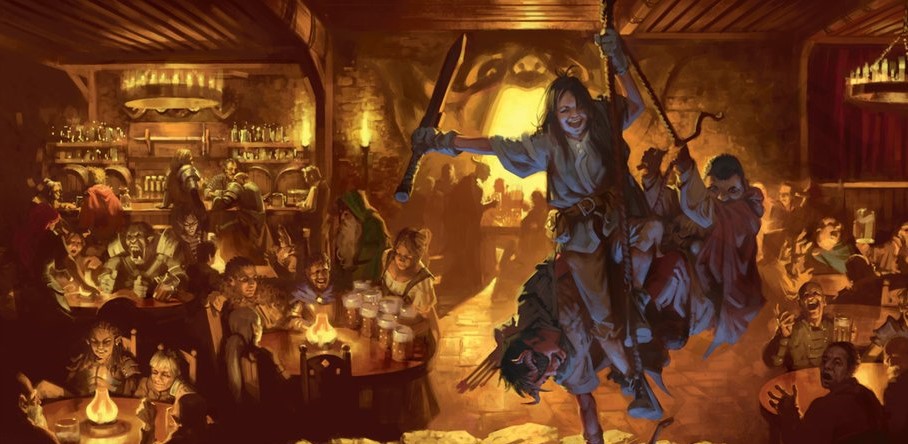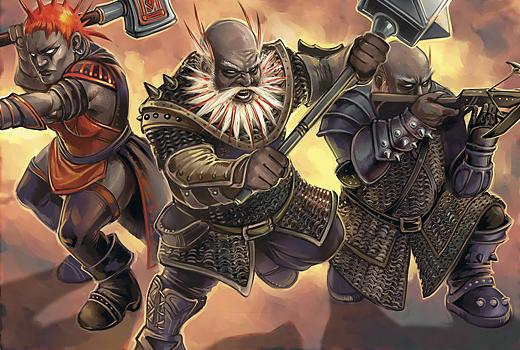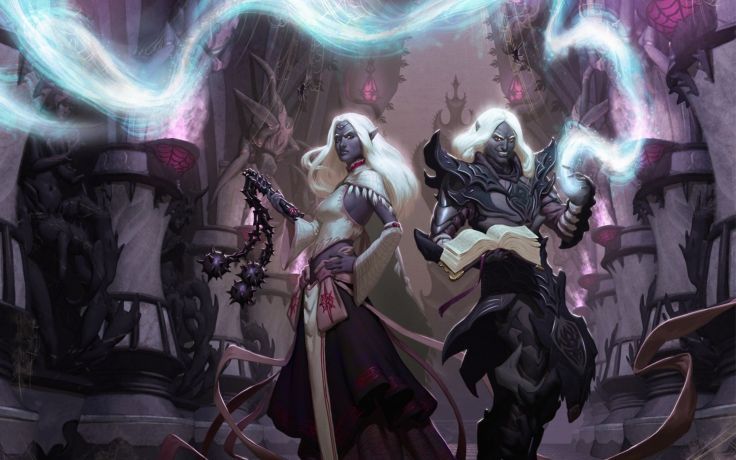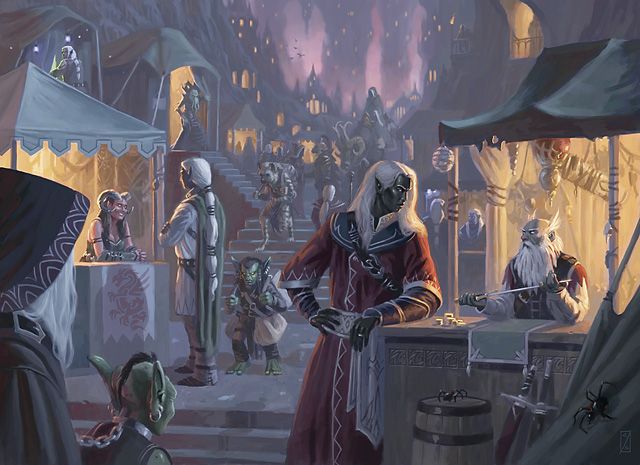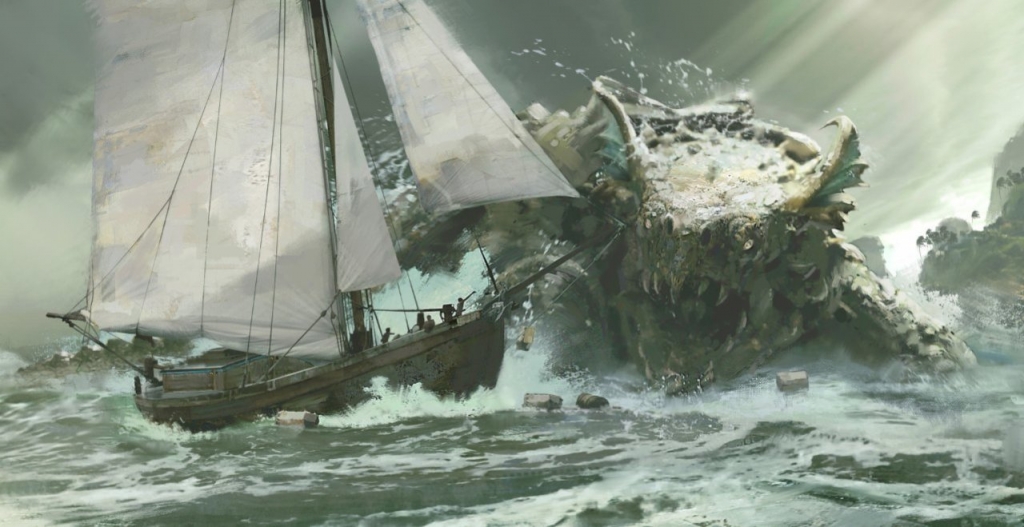Dungeon Master Zone: Using Conflict In Dungeon Of The Mad Mage

Dungeon of the Mad Mage is a perfect example of how to transform a collection of rooms into a living, breathing dungeon. Want to make your dungeons dynamic? Want to know why some feel so alive? Read on, Dungeon Masters.
The levels in Dungeon of the Mad Mage are an amazing example in what it means to create a dynamic dungeon. Each one is an ecosystem of its own, full of a variety of monsters that don’t always cooperate with one another. Here there’s a level where Hobgoblins have moved in to try and take over, there a desperate house of Drow battle with a tribe of minotaurs over a magical, trap-laden maze. All of which comes together to feel like a dungeon that exists when the players aren’t around. It’s this beautiful mass of madness, cultivated and curated by Halaster Blackcloak–but even with his hands on the reins directly, it still feels like Undermountain is its own organism. The levels all tell their own story. Some may sprawl from floor to floor, but all are distinct. And yet they all work together too. The Dungeons of the Mad Mage feel alive.
And as a Dungeon Master, figuring out how to make your Dungeons feel like they’re part of a living world can do wonders for you. It can increase your players’ immersion, making it easier for them to thrust themselves into the world you’re laying out for them. It can help you jump start your next session–not sure where you’re going? Well just think about what’s going to happen now that the players have killed the minotaur chieftain and thrown the balance of power off. It practically writes itself.
But more than that, it reinforces the idea that the players’ actions have consequences. It’s why you’ll find, at the end of each dungeon level, a description of what happens after the player characters have come stomping through. Titled Aftermath, each of these sections is a short blurb that talks about various narrative directions your particular version of Undermountain might go in.
On level 9, where players encounter a magical academy, they might cause the headmaster of the school to change, which in turn takes the school in a new direction; or on a layer where two Drow houses are battling it out with some trogoldytes and a magically enhanced Behir, the players might nudge the balance of power in favor of any of the actors on this stage. I’m not going to walk you through each of the levels of Dungeons in the book, but here are a few nuggets of wisdom you can condense down from the various layers of Undermountain.
- Each Dungeon has at least one faction
- Each faction has a representative that the PCs deal with
- Each faction has an ambition because of it
- Each ambition changes the way the Dungeon works–and the way members of that faction function in the dungeon.
- Each Faction has its own territory
- Factions have allies and enemies
All of this sets you up with an ecosystem in a single layer of the dungeon. It can be a cramped one, where, for instance, the hobgoblins are pressed right up against their Duergar opposition.
Or it can lead into a larger, sprawling conflict. The important thing is that, you have a sense of how the Dungeon will change after the players have been through. One of my favorite examples is level 10, Muiral’s Gauntlet. This Dungeon is host to two different warring Drow factions. Muiral the Misshapen, a once-human mage and former apprentice of the Mad Mage who has grafted his torso onto the body of a giant scorpion, uses this level as his hunting grounds. But–Muiral isn’t up to his job anymore. Instead he’s steadily being ground down by two warring Drow factions.
There’s House Auvryndar, which is run by a powerful Drow priestess who has taken steps to put House Auvryndar under her iron control. This includes enslaving Troglodytes (who are themselves plotting an uprising), capturing enemy drow (who are two levels down and sending scouts upward to fight House Auvryndar), and summoning demonic advisors. Here we can see each of the segments broken out: House Auvryndar, Muiral the Misshapen, and House Auvryndar’s enemies, House Freth, are all major factions at play here. They each have their own territory in the dungeon, and have their own goals that they’ll pursue with or without the Player Characters. And depending on how the Player actions unfold, a number of things might happen.
Muiral might animate the corpses of dead drow and troglodytes and bring the whole level under his man-scorpion control. Or House Auvryndar continues to live as long as its High Priestess does–she’s wrapped up inexorably with the rise and fall of House Auvryndar. Or alternately, the Troglodyte rebellion might succeed.
But I love this kind of stuff because it pushes an unusual choice on the player. Their actions will definitely have consequence, but it’s not obvious immediately which of these consequences is “the good” option. It just sets pieces in motion and extrapolates on that for you.
- Each faction has a plan
- Each plan has consequences
- For Success
- For Failure
- Change happens whether the PCs are there or not
Most notably this serves to show us how the Dungeon is alive. It’s a great moment when, if the players have explored to a certain point, and then leave to either level up or go off on another adventure, they return to find that the Dungeon is not how they left it. They can see the impact of their actions (and in some memorable cases, inaction) writ large before them. This means that they’ll see the Dungeon evolve–and that suddenly makes it feel so much more dynamic.
That’s what takes a dungeon from being a collection of randomly linked rooms to a living, breathing, ecosystem. Which is where the Dungeon of the Mad Mage shines most. So take some time, flip through it, and figure out how you’ll make your dungeons come alive.
Happy Adventuring!

